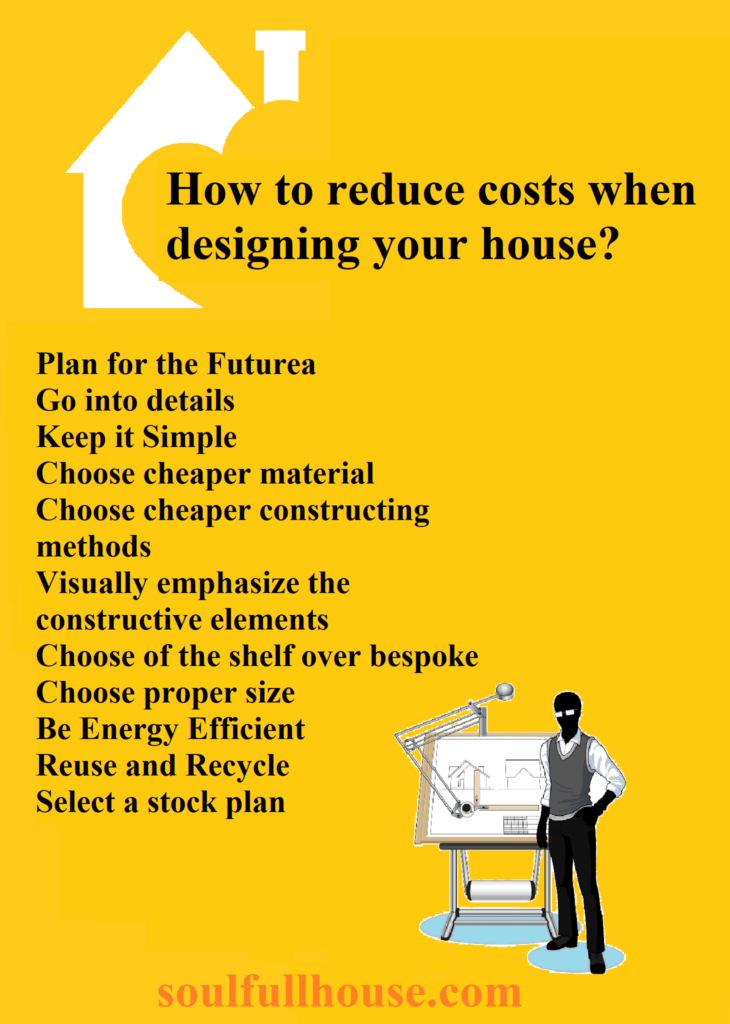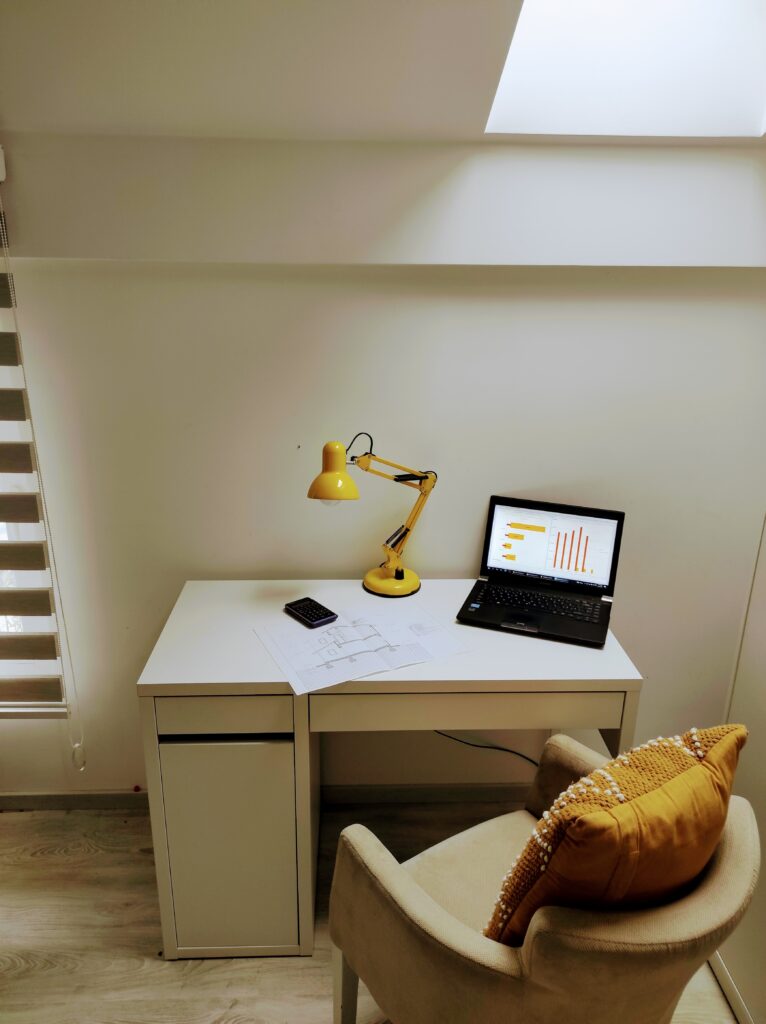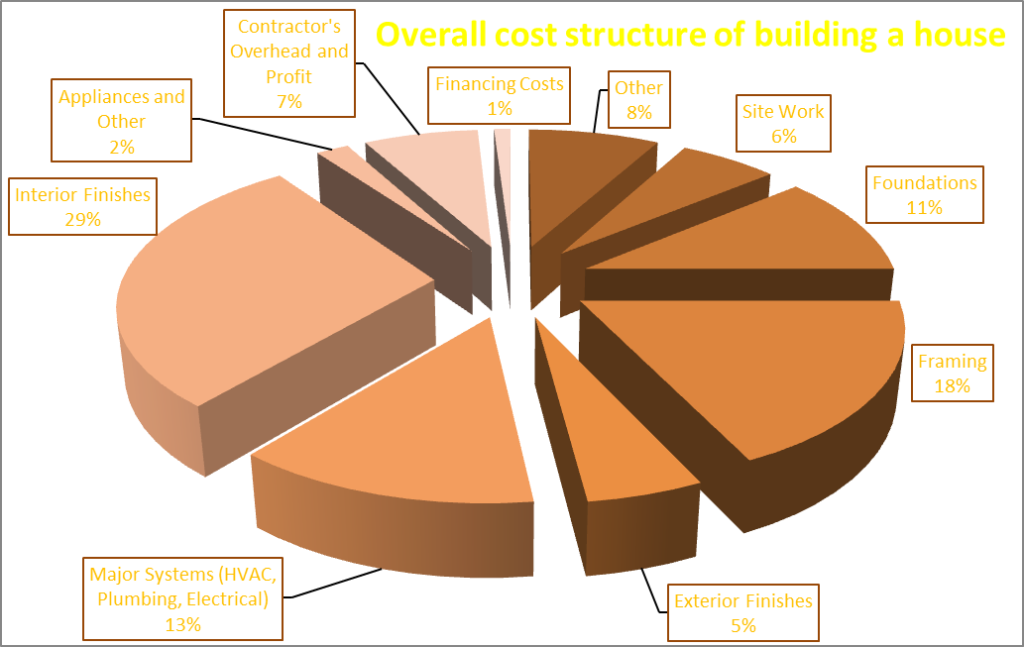Building a home is an exciting endeavor, but it is also a significant financial investment. Cutting construction costs during house designing is probably the list painful measure to ensure the project stays within budget. However, many people may worry that cutting cost this way will lead to a lower quality or less stylish home. In this article, we will discuss various strategies for cutting construction costs when designing a home without sacrificing quality or style. By implementing these strategies, homeowners can create a beautiful and functional home that meets their needs while staying within their budget.

How to reduce construction costs during house designing?
As a general rule, we can say that cutting construction costs during the house designing is the most successful, in terms of savings, and the most comfortable, in terms of the outcomes gained, strategy you can use. There are several effective ways to implement this strategy and cut construction costs without sacrificing quality or style:
- Plan for the future
- Go into details
- Keep it Simple
- Choose cheaper material
- Choose cheaper constructing methods
- Visually emphasize the constructive elements
- Choose of the shelf over bespoke
- Choose proper size
- Be Energy Efficient
- Reuse and Recycle
- Select a stock plan

Plan for the future
To cut construction costs during house designing, it’s crucial to think about the future and plan ahead. This means considering not just your current needs, but also any future changes in your family or lifestyle. By planning for the future in the initial design, you can avoid expensive changes later on. For example, adding rooms or features after construction can be costly and disruptive. Therefore, it’s essential to anticipate future growth or changes within your family and design a home that can accommodate them. One way to plan for the future is to incorporate flexible spaces into the design. These are rooms or spaces that you can easily repurpose as your needs change. For example, you can easily turn your home office into a guest room.
Go into details
When it comes to reducing construction costs in the house designing, paying attention to the details is essential. One of the most significant areas where you can minimize costs is reducing construction waste. This means working with your builder or contractor to ensure that they are using materials efficiently and minimizing excess waste.
To accomplish this, you must have as accurate material specification as possible and as precisely figured out the dynamics of the works as possible in order to know the required pace of delivery of materials to the construction site.
Another way to minimize costs is to avoid changing orders once construction has begun. Changing orders can lead to delays and increased costs, as you must re-order materials or re-done labor. Therefore, it’s important to work closely with your architect to finalize all design decisions and make any necessary changes before construction begins.
Keep it Simple
Another important consideration is keeping it simple and designing a home that is easy to construct. This means choosing materials and techniques that are readily available and commonly used in the industry. Avoiding complex building techniques or features can also simplify the construction process and reduce costs. Make fewer corners, curves, and angles. By working closely with your architect and making smart design choices, you can create a beautiful and functional home that still fits within your budget.
Choose cheaper material
Choosing cheaper materials can be a good way to reduce construction costs during house designing, but many people assume that cheaper materials mean lower quality. However, this is not necessarily the case. Cheaper materials can be just as durable and functional as more expensive ones, as long as you choose carefully and install them properly. Advantage of choosing cheaper materials is that it can encourage you for greater flexibility in the design process.
When the cost of materials limiting you, you must be more creative and experimental in your designs. This can lead to a more unique and personalized home that reflects your style and personality. By doing your research and working with a reputable designer, you can find cost-effective materials that meet your needs and stand up to the test of time. With the right approach, you can save money on your home construction project without sacrificing quality or style.
Choose cheaper constructing methods
In addition to choosing cheaper materials, selecting cost-effective construction methods is also an important consideration when designing your house. One advantage of choosing cheaper construction methods is that they can be faster and more efficient, which can help to reduce overall construction costs. Examples are prefabricated construction techniques and innovative construction methods such as 3D printing. Additionally, choosing construction methods may imply less energy and manpower required for the building process, which further lowers the price.
After many years of building houses, I can confidently state that this is the most significant of the methods listed here. It unquestionably has the greatest single impact on the ultimate construction cost!
Visually emphasize the constructive elements
When designing a house, one way to reduce costs is to emphasize the constructive elements in the design. This means highlighting the structural and functional elements of the building, such as the roof beams, brick walls, stone foundation, even concrete sometimes.
Emphasizing the constructive elements can compensate for the subsequent use of luscious materials in other areas of the design. This creates a balanced design that is both functional and aesthetically pleasing. Another advantage of emphasizing the constructive elements is that it can create a sense of honesty and authenticity in the design.
By highlighting the structural elements of the building, the design becomes more transparent and true to its purpose. This can create a feeling of integrity and quality, even if some of the finishes are not as luxurious as they might otherwise be.

Choose of the shelf over bespoke
When designing a house, one way to reduce costs is to choose off-the-shelf products and materials instead of bespoke, custom-made ones. Bespoke products are designed and created specifically for a particular project, while off-the-shelf products are mass-produced and readily available. While bespoke items can offer unique design elements, they can also be much more expensive due to the labor and materials involved.
Choose off-the-shelf products and materials and you can significantly reduce costs because they are produced on a larger scale, which means that the manufacturing costs are spread out over a larger number of units. This results in a lower price per unit, making it more affordable for homeowners. Additionally, off-the-shelf products often have a shorter lead time, which means that you can be deliver and install them more quickly than bespoke items.
Choose proper size
Proper house sizing is an important factor to consider when designing a house and trying to reduce costs. In addition to overall size, the number of bathrooms and bedrooms in a home can also affect costs. Adding additional bathrooms and bedrooms can increase the cost of construction, as these areas require additional plumbing, fixtures, and finishes.
Adding unnecessary rooms can increase construction costs without adding much value to the home. Instead, homeowners should focus on designing a space that meets their needs without unnecessary excess.
Be Energy Efficient
Energy efficiency is an important consideration when designing a house, as it can significantly reduce the long-term costs of maintenance. An energy-efficient home can help lower utility bills, reduce the environmental impact of the home, and improve the overall comfort and health of the occupants.
There are several key elements of an energy-efficient home, including the use of energy-efficient appliances, insulation, and windows. Finally, they should consider renewable energy sources, such as solar panels, to further reduce energy usage and costs. If this appears to be an increase in the cost of building a house, keep in mind that every dollar you invest in the home’s energy efficiency is recovering through decreased maintenance in three to seven years at most. So invest in order to save.
Reuse and Recycle
Reuse and recycling are important considerations when designing a house, as they can have a significant impact on reducing the overall price. There are many other benefits to reusing and recycling materials, including reducing the need for new resources, reducing the amount of waste sent to landfills, and promoting a more sustainable and environmentally-friendly lifestyle.
One way to incorporate reused materials into the design of a home is to use reclaimed materials. This can include using salvaged wood or bricks for flooring or walls, or repurposing old doors or windows as decorative elements. Reclaimed materials can add character and uniqueness to a home, while also promoting sustainable practices.
Recycled materials you can also use in construction. For example, recycled plastic you can use to make durable and weather-resistant roofing materials. Additionally, recycled steel you can use in construction framing, which can reduce the need for new resources and promote sustainability. Some examples of ways to use recycled materials in construction include using recycled concrete for foundations, using reclaimed wood for flooring or siding, and using recycled glass for countertops or decorative elements.
Select a stock plan
Although this is something that I wouldn’t recommend, selecting a great stock plan instead of a custom-drawn plan can bring you several benefits among which money savings is most important. What are the others? Another advantage of selecting a stock plan is time-saving. Stock plans are readily available, so homeowners can easily find a plan that fits their needs and start building right away. This can be especially beneficial for homeowners who have a tight timeline or need to start building quickly.
Also, stock plans are usually well-tested designs that have been used by other homeowners. This means that they have been tried and tested, and any issues or flaws have already been addressed. This can offer peace of mind for homeowners, knowing that the design has been proven to work well.
At the end, it should be noted that one significant disadvantage of ready-made plans is that it is nearly impossible to find exactly the one you need. Still, many architects and designers offer customization options. Homeowners can often make minor modifications to the design to fit their specific needs, such as adding or removing rooms or changing the layout. This can offer some flexibility and customization without the added cost of a custom-drawn plan.
In conclusion, designing a house with a focus on cost reduction can be done without compromising on quality or style. There are many effective strategies that can be employed, such as planning for the future, paying attention to details, keeping it simple, choosing cheaper materials and constructing methods, emphasizing the constructive elements, choosing off-the-shelf over bespoke products, being energy-efficient, reusing and recycling, and selecting a stock plan. By working closely with your architect, being creative, and doing your research, you can create a beautiful and functional home that is within your budget. Remember, it’s all about being smart and strategic in your design choices, and with the right approach, you can save money on your home construction project while still achieving your desired outcome.
